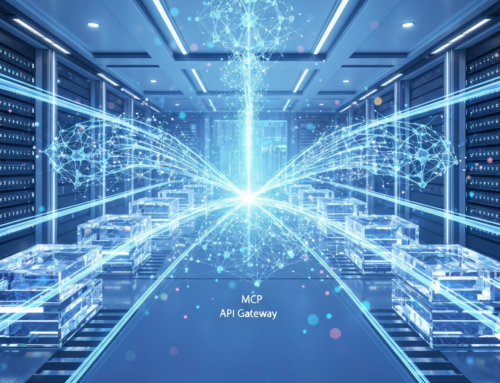Executive Summary The Finance Tipping Point and the Need for Transformation
The role of the Chief Financial Officer (CFO) is at a critical inflection point. For over a decade, finance functions have successfully pursued cost reduction through centralization and automation, pushing operational efficiency toward its “terminal value.” Today, however, the escalating demand for real-time, strategic insights from the business, coupled with regulatory pressure, is outpacing the capacity of traditional systems. The next wave of value creation will not come from incremental tool upgrades but from a fundamentally new structure: the AI agents new finance operating model. This model leverages autonomous software entities, known as AI agents, that can act intelligently and collaboratively to manage complex, end-to-end financial workflows.
Forward-thinking organizations are already realizing massive gains from this shift. Initial analysis suggests that deploying agents can lead to up to 90% time savings in key processes, freeing finance professionals to redirect up to 60% of their time to high-value analysis and insight generation. AI agents are not merely faster versions of robotic process automation (RPA); they are autonomous decision-makers capable of managing tasks that require multiple steps, system integrations, and dynamic judgment. The successful adoption of this model is quickly becoming the new baseline for competitive advantage, transforming the finance function from a necessary cost center into a strategic, performance-driving powerhouse.
The transition to an AI agents new finance operating model requires CFOs to evolve their mandate. It moves beyond digitizing paper to embedding intelligence across the entire enterprise, aligning strategy, workforce, and technology to unlock unprecedented operational speed and financial foresight. This revolutionary model enables the finance team to handle transactional volume at scale while simultaneously elevating its contribution to core business strategy.
Defining the AI agents new finance operating model
To grasp the transformation, it is essential to distinguish AI agents from their automation predecessors. The AI agents new finance operating model is predicated on systems capable of agentic behavior—the ability to perceive their environment, reason, plan, and take autonomous actions to achieve a defined goal. Unlike prescriptive RPA, which strictly follows a set of rules, AI agents are designed to handle exceptions, learn from outcomes, and adapt to changing data.
An agent is typically specialized for a particular finance role, functioning as a dedicated part of a “digital workforce.” You might deploy one agent as an Accounts Payable specialist, another as an FP&A analyst, and a third as a Compliance checker. These agents possess specific skillsets, access to targeted data sets, and the ability to utilize external tools via function calling. The true power emerges when these specialized agents are orchestrated into complex, multi-step workflows.
Key Characteristics of Agentic Finance Workflows
- Autonomy: Agents can initiate and execute multi-step tasks without human intervention, such as collecting data, performing analysis, and drafting an action plan.
- Intelligence & Learning: They learn from every interaction and exception, continuously refining their models and decision-making over time, similar to a human gaining experience.
- Orchestration: The system coordinates multiple agents—each specialized in a specific function—to complete a large, complex task that crosses system boundaries. As a leading concept, AI agent orchestration is the "digital symphony" that ensures the right agent is activated at the right time.
- Categorization of Tasks: Finance tasks under this new model fall into three categories: fully agent-driven (routine, repetitive tasks), agent-assisted (complex tasks where the agent handles routine steps and augments a human analyst), and human-led (strategic decisions that require human judgment and final review).
By leveraging these capabilities, the finance function shifts from managing data and processes to governing a network of intelligent agents. This fundamental change in operational structure is what makes the significant time and cost savings possible.
Unlocking 90% Time Savings Procure-to-Pay and Automated Data Processing
The most immediate and quantifiable returns from the AI agents new finance operating model are realized in high-volume, transactional areas like Procure-to-Pay (P2P) and Order-to-Cash. These complex, cross-departmental processes are ideal proving grounds because they are structured, data-intensive, and historically bottlenecked by manual checks and exception handling.
In the P2P cycle, for example, traditional automation might handle a simple invoice submission. An AI agentic workflow, however, takes on the entire process:
- An invoice is submitted.
- An **Extraction Agent** pulls key information (vendor, amount, line items).
- A **Matching Agent** retrieves the Purchase Order (PO) and relevant Master Services Agreement (MSA) from the repository.
- A **Compliance Agent** executes a 2-way or 3-way match, comparing the invoice against the PO and the goods receipt (GR) or contractual terms.
- A **Discrepancy Resolution Agent** automatically flags any deviations—be it price variation, quantity mismatch, or terms violation.
- If a discrepancy is found, a **Communication Agent** drafts a customized email to the vendor or internal contact, citing the specific issue and requesting resolution or clarification.
This streamlined process allows finance specialists to intervene only in the rare instance that a complex issue is flagged for human review. PwC data indicates that this agent-driven approach can reduce cycle times by up to 80% and, more broadly, contribute to the 90% time savings seen in fully automated processes.
Deep Benefits in Accounts Payable
The shift to agentic automation in accounts payable goes beyond mere speed. It introduces a new level of control and strategic insight:
- Enhanced Compliance and Audit Trails: Every action taken by an agent is documented, tightening audit trails and reducing compliance risk automatically.
- Intelligent Dispute Resolution: Agentic systems are flexible enough to manage complex tasks like invoice dispute investigations. Unlike rigid RPA, agents can pull disparate information and execute multi-application workflows to provide meaningful resolutions. According to experts in automation, agentic automation is transforming P2P by delivering an automated system to process invoices, investigate and resolve discrepancies, and initiate vendor communication.
- Strategic Redirect: With agents managing transactional work, human teams focus on higher-value activities: vendor performance management, contract renegotiation, and root cause analysis of recurring issues.
By transforming P2P into a nearly straight-through process, AI agents free human capital to address the strategic challenges that truly drive enterprise value.
Strategic Augmentation AI Agents in Treasury and Liquidity Forecasting
While the back office focuses on transactional efficiency, the front office of finance—Treasury and FP&A—benefits from the strategic augmentation provided by AI agents. Here, the focus shifts from transactional automation to enhancing the quality, speed, and foresight of critical financial decisions, particularly in cash management and liquidity planning.
Historically, cash flow forecasting was a manual, spreadsheet-driven exercise that relied on historical data. AI has introduced a new era of precision and efficiency, but the true evolution is the transition from mere forecasting to proactive liquidity planning. As experts point out, forecasting asks, “What do we think will happen?” whereas liquidity planning asks, “What if it doesn’t?” AI-driven liquidity planning is designed to answer the latter question by stress-testing scenarios generated from a company’s actual operating environment.
AI-Driven Foresight and Risk Management
In the treasury function, AI agents take on the heavy lifting of data consolidation and analysis:
- Real-Time Cash Visibility: Agents pull and consolidate cash balances from disparate banking systems, ERPs, and AR/AP platforms in real time.
- Advanced Predictive Models: Leveraging machine learning models, these agents analyze vast datasets—including internal sales trends, market data feeds, and unstructured data (like news and social media sentiment)—to predict near-term inflows and outflows with high precision. AI-powered forecasting models can reduce error rates by up to 50% compared to traditional methods, providing the unprecedented accuracy needed for modern corporate treasury, according to insights from leading financial institutions.
- Intelligent Scenario Planning: For the CFO, the ability to rapidly model complex risk scenarios is paramount. Agents can run thousands of "what-if" simulations based on real-time data to assess how events like a sudden currency devaluation or a major customer default would impact the company’s cash position. Agentic AI can provide 90% time savings in scenario analysis, enabling treasury teams to focus on strategy, not model building.
This powerful combination of real-time data and sophisticated simulation allows treasury teams to move beyond reactionary risk management. They gain the capacity to sharpen capital allocation strategies, adjust investment policies, and actively optimize working capital, turning the treasury function into a strategic advisor rather than a support function.
Building the Intelligent Foundation Modular Architecture and Workflow Orchestration
The successful deployment of the AI agents new finance operating model hinges on a robust, scalable technical foundation. This is not about installing a single application; it is about building an intelligent ecosystem that allows specialized agents to collaborate seamlessly. The architecture must be modular and reusable to maximize speed and cost-efficiency when scaling across various finance domains.
Central to this foundation is AI agent orchestration, the system that manages and coordinates the network of specialized agents. Without proper orchestration, agents would operate in silos, leading to redundancies and inefficiencies.
Essential Agent Orchestration Patterns for Finance
CFOs and their technology partners must be familiar with the various orchestration patterns that can be used to manage multi-agent systems. These patterns define how agents interact to solve a problem:
- Sequential Orchestration: Agents are chained in a predefined, linear order, where the output of one agent becomes the input for the next. This is ideal for multi-stage processes like the P2P workflow, such as “Extract Invoice Data → Match PO → Draft Resolution Email.”
- Concurrent Orchestration: Multiple agents process the same input simultaneously and independently, and their results are aggregated. This is useful for financial analysis, where a stock might be assessed concurrently by a *Technical Analysis Agent*, a *Fundamental Analysis Agent*, and a *Sentiment Analysis Agent* to provide a diverse, rapid recommendation.
- Handoff Orchestration: Enables dynamic delegation. One agent assesses the task and, if it reaches its capability limit, transfers it to a more appropriate specialist. In customer service finance, a Triage Agent might hand off a complex billing dispute to a dedicated Financial Resolution Agent.
- Magentic Orchestration: Designed for open-ended or complex problems, a Manager Agent dynamically builds a plan (a task ledger) and delegates tasks to specialized agents equipped with tools to make direct changes in external systems. This is critical for automated incident response or complex financial investigation workflows.
Adopting a modular architecture allows organizations to reuse code, agents, and agent frameworks across workflows, helping to scale the AI agent system quickly and keep development costs down. The goal is to create plug-and-play AI modules that can be rapidly assembled to automate new business processes as they are identified.
The CFO’s Next Mandate Leading the Human-Agent Partnership
The rise of the AI agents new finance operating model fundamentally changes the nature of work, shifting the CFO’s primary focus from managing processes to leading a symbiotic human-agent partnership. This is not a displacement of the workforce but an augmentation, requiring a new set of leadership priorities focused on governance, skills, and strategic oversight.
The CFO’s next mandate centers on three critical areas:
1. Workforce Reskilling and Role Redefinition
The human team’s most important task becomes managing and overseeing the AI agents. New roles must be defined—such as "Agent Orchestrator" or "AI Governance Specialist"—focused on reviewing agent performance, managing exceptions, refining workflow instructions, and, most importantly, extracting high-value insights from the agents’ aggregated data. The CFO must cultivate a culture where human expertise is valued for strategic judgment and creative problem-solving, not for manual data manipulation.
2. Implementing Robust Governance and Oversight
The autonomous nature of AI agents demands rigorous control. The finance function must establish clear policies and protocols for agent deployment, including defining risk tolerance, setting clear operating limits, and ensuring compliance. Trust in the model requires explainability and auditability. Every agent’s decision, action, and data source must be traceable. This proactive approach to governance is essential for maintaining integrity and credibility with regulators, auditors, and the board.
3. Prioritizing Strategic Investment
Investment decisions must be guided by strategic value, not just short-term cost-cutting. The CFO must champion investments in the underlying data architecture, the AI orchestration platform, and the continuous training of both the human and digital workforce. The objective is to unlock the most valuable financial insights, transforming the AI agents new finance operating model into a source of competitive differentiation rather than merely a back-office utility.
By embracing these leadership roles, the CFO ensures that the transition to an agentic finance model is not just a technological upgrade, but a holistic business transformation that future-proofs the enterprise for the next era of financial intelligence.
Inspired by the shift to autonomous operations? Whether you’re planning for AI integration or maximizing efficiency through core digital channels, Idea Forge Studios builds the web development, e-commerce, and digital marketing foundations that drive business transformation. Ready to discuss your specific needs? Request a consultation or quote today.
You can also call us directly at (980) 322-4500 or email us at info@ideaforgestudios.com.








Get Social